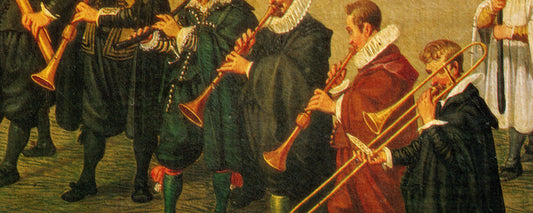Music Music Music
Violins Learn More - How They Are Made
How a Violin is MadeSelecting the right piece of wood Storing materials 24 hours a day, 365 days a year The wood that will eventually be used to make a...
Violins Learn More - How They Are Made
How a Violin is MadeSelecting the right piece of wood Storing materials 24 hours a day, 365 days a year The wood that will eventually be used to make a...
Trumpet Care and Maintenance
Care and Maintenance of a TrumpetWeekly care and maintenance Cleaning the slides Carefully remove the slides and wrap a polishing gauze around a cleaning rod so that the metallic part...
Trumpet Care and Maintenance
Care and Maintenance of a TrumpetWeekly care and maintenance Cleaning the slides Carefully remove the slides and wrap a polishing gauze around a cleaning rod so that the metallic part...

Trombone Introduction
Trombone Trombones produce sound as they are extended and contracted. They have continued to evolve since their creation in the 15th century. The origins of the TromboneThe birth of the...
Trombone Introduction
Trombone Trombones produce sound as they are extended and contracted. They have continued to evolve since their creation in the 15th century. The origins of the TromboneThe birth of the...
French Horn Care and Maintenance
Care and Maintenance of a HornBasic care and maintenance Wipe the surface with a cloth To properly care for the surface of the instrument, use a polishing cloth or other...
French Horn Care and Maintenance
Care and Maintenance of a HornBasic care and maintenance Wipe the surface with a cloth To properly care for the surface of the instrument, use a polishing cloth or other...
Trombone Care and Cleaning
Care and Maintenance of a TromboneWhat do I need to do daily? Prior to playing Preparing the slide 1. First, clean any dirt from inside the slide, then apply a...
Trombone Care and Cleaning
Care and Maintenance of a TromboneWhat do I need to do daily? Prior to playing Preparing the slide 1. First, clean any dirt from inside the slide, then apply a...
French Horn Introduction
Horn The horn is a brass instrument whose soft resonant timbre allows it to harmonize well with both brass and woodwind instruments. One of the unique aspects of this instrument...
French Horn Introduction
Horn The horn is a brass instrument whose soft resonant timbre allows it to harmonize well with both brass and woodwind instruments. One of the unique aspects of this instrument...
